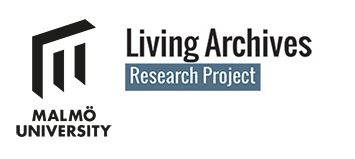The Living Archives project group meets in person on a bi-weekly basis for seminars on poignant topics and discussions on what directions we should take. This week’s meeting was on the topic of Augmented Reality (AR), led by Daniel Spikol.
The discussion on future directions of AR in this project was based on the experiences made in the DansAR workshop series, the experiments on how augmented reality (AR) applications can support the in the creation and performing of media content. An issue that came up is that most AR apps are not designed to create aesthetically pleasing experiences; they are built to add value to advertisements (scan the image of the BMW and see a video of the car driving on a mountain road). A more thorough analysis of the DansAR workshop series will follow, but a few of the main findings are:
- not many people were actually paying any attention to the dancers, they became part of the ambient environment;
- the participants didn’t want to follow the “stories” the students had created, i.e. they didn’t access the trigger points in the order that had been pre-chosen;
- it would have been better to do these experiments over a period of e.g. 10 weeks than cramming them into 1-week blocks;
- archives that are only accessible when performed emphasize the ephemeral and transient nature of contemporary archives and archiving practices
- AR do have a rich modality that opens up for further exploration.
Related readings
Vannevar Bush’s paper on the Memex (a portmanteau of “memory” and “index”), entitled As We May Think, where Bush describes a memex as an electromechanical device enabling individuals to develop and read a large self-contained research library, create and follow associative trails of links and personal annotations, and recall these trails at any time to share them with other researchers.
Yvonne Roger’s paper Moving on from Weiser’s Vision of Calm Computing where an agenda is outlined that focuses on engaging rather than calming people.
Jaron Lanier’s book You are not a gadget: a manifesto where the mystery of being human in relation to the design of gadgets is explored:
“What is a person?” If I knew the answer to that, I might be able to program an artificial person in a computer. But I can’t. Being a person is not a pat formula, but a quest, a mystery, a leap of faith.
Tools and implementations that have been looked into: Aurasma, tag based; Argon, GPS (kind of); Layar, tag/GPS; Wikitude, GPS; Metaio/Junaio, GPS. Wanderous: psychogeography app, helps you find interesting things when walking through a city; RJDJ, a sonic-based app augmenting the soundscape; Learning to Shout, an opera-app you follow through the city; Museum of London’s Streetmuseum, an app that shows you where you are in London and all the historical photos around you.



